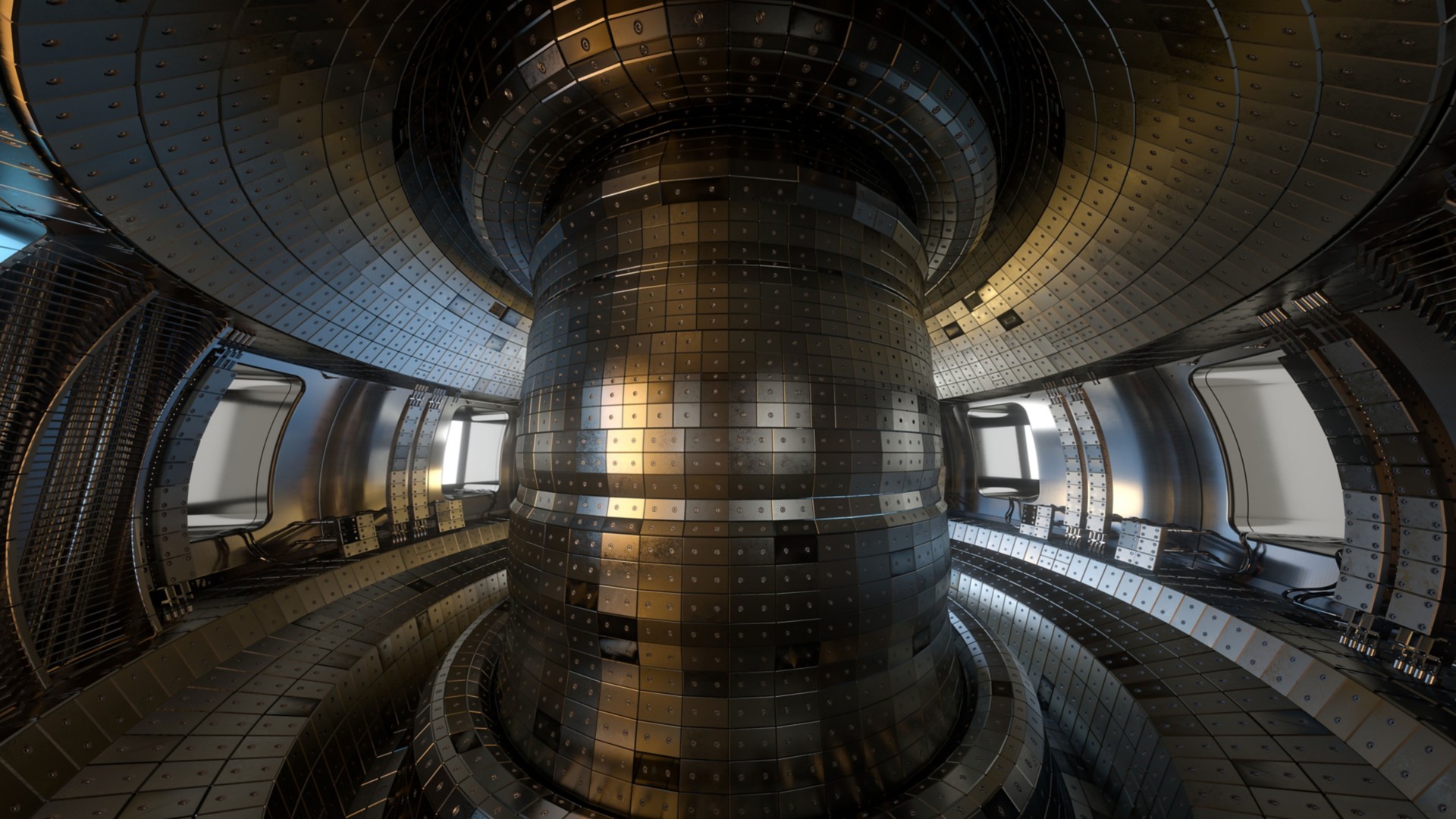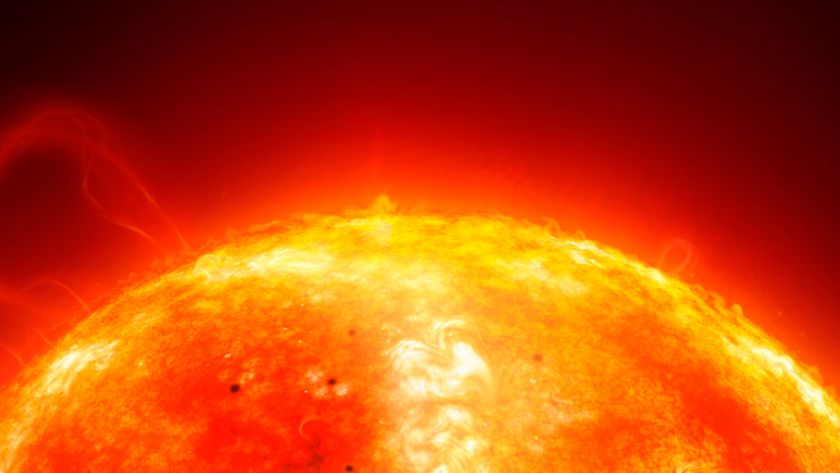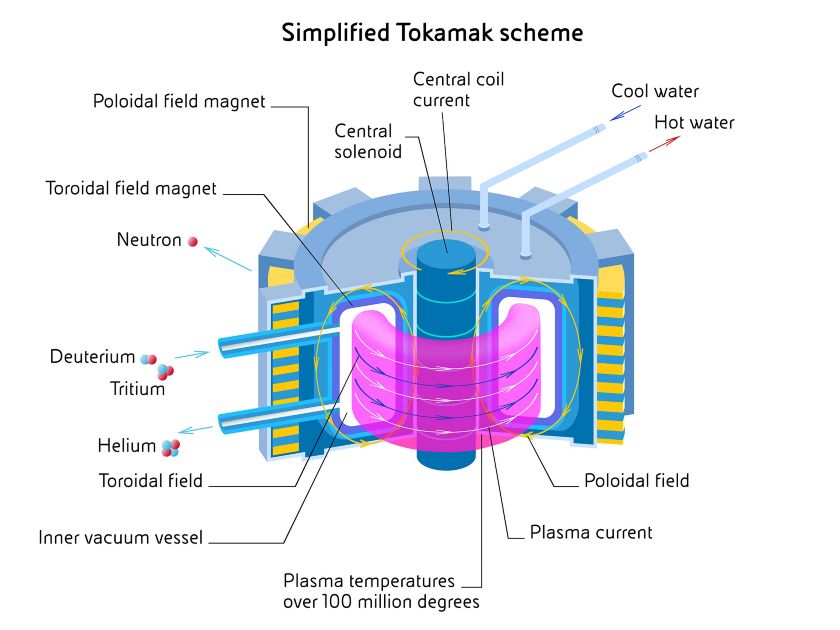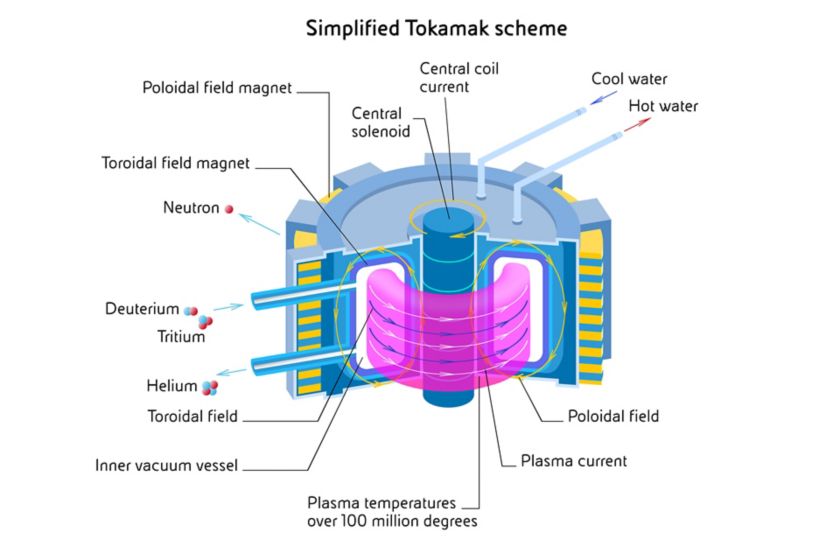- STORIES

Carbon-based energy has fuelled much of our industry as we know it, but its fate is by now clear. We need to decarbonise in order to combat the acceleration of climate change. Among the various alternative energy sources and technologies that are being explored is magnetic confinement fusion, a source of energy that uses a carbon-free process. The fusion process is based on merging light atoms (such as hydrogen isotopes) at very high temperature, which releases an enormous amount of energy. This makes fusion a much more efficient source of energy than fossil fuels.
For example, a single gram of the hydrogen isotopes commonly used in the process can generate the same amount of energy as 11 tons of coal (according to an estimate by the Institute of Electrical and Electronics Engineers).
The inspiration comes from the Sun
Like all stars, the Sun is a fusion forge where hydrogen nuclei merge, forming helium and releasing energy. Very high gravitational forces generate the pressure and temperature in the star core, necessary to make the fusion process possible.
At a temperature of almost 10 million degrees centigrade, atoms are split into a plasma state, the fourth state of matter: the highly excited hydrogen atoms are no longer able to retain their own electrons, so that a mixture of positively charged nuclei and negatively charged electrons fluctuate and strongly interact with one another and with the surrounding electromagnetic fields. Normally, two positively charged nuclei do not merge, due to electrostatic Coulomb repulsive force. In stars, however, the gravitational forces at play allow particles to energize until they overcome the mutual repulsive force and thus merge.
Reproducing comparable conditions on Earth, which lacks the massive gravitational force associated with the Sun’s enormous mass, requires large research and technology efforts, that involve collaborations between many countries already at work. A device invented in 1950, the tokamak, could be the solution.
The International Thermonuclear Experimental Reactor (ITER), currently under construction in southern France, is an example of tokamak. Once completed, it will be the largest tokamak in the world in terms of size and is the result of a collaboration between 35 countries. Whereas fusion reactions in the Sun are sustained due to the extreme conditions found in its core, the processes to achieve magnetic fusion on Earth are constrained by several important factors; obtaining the high temperature needed to reach the plasma state, the appropriate plasma pressure, confining the plasma within a geometrically restricted space, stabilizing and sustaining it over time and finally harnessing the energy generated are only some to mention.
The ITER project is expected to generate 10 times more plasma power (500 MW) than it will absorb, and possibly be the first machine to achieve this result.
Magnetically Confined fusion (MCF) is one of the most thoroughly researched and tested methods for trying to reproduce this phenomenon and harness energy from fusion.
A look inside
Simply stated, a tokamak consists of a doughnut-shaped (a so-called “toroid”), high vacuum chamber in which fusion reactions should take place.
To control the dynamics of the plasma flow inside of it, powerful magnetic fields surround the vacuum chamber: the whole device is enclosed by coils of different geometric shapes made of superconducting magnets, which have the ability to generate strong, controllable magnetic induction fields. They require a reasonable amount of power and lowest temperature cooling (close to absolute zero) and help generate, confine and sustain plasma at a temperature of as much as 100 million degrees (about 10 times that of the sun’s core).
The magnetic field generated around the entire toroid accelerates the particles and confines them, with the specific purpose of minimising plasma contact with the inner walls of the toroid. A combination of magnetic induction fields generated by specifically designed auxiliary coils serve to keep the plasma stable. The particles are accelerated by plasma heating systems, bringing the positively charged nuclei close enough to overcome the electrostatic forces and merge.
Feeding the reactions
Deuterium and tritium, two hydrogen isotopes, are the fuel for the magnetic confinement fusion reactions that will take place in the ITER tokamak and are already used in experiments at the Joint European Torus (JET) tokamak in Culham, Oxfordshire, UK.
While deuterium is widely available on earth (it accounts for a significant percentage of the total hydrogen present in water), tritium is not. The first fusion experiments with ITER will use tritium that is currently produced by known processes. Following the ITER project, there are plans to test its demonstration tokamak model, called DEMO, which is designed to be self-sufficient in tritium production. This will be possible by covering the plasma-facing portion of the vacuum vessel with metal tiles containing lithium (the so-called “blanket”). Lithium isotopes (⁶Li) are able to absorb the high energy neutrons generated by the merging of deuterium and tritium, and then split to generate themselves one tritium and one helium nucleus. The generated tritium will therefore be collected inside the tokamak and then extracted from the tiles, thus enabling the fusion reaction to be fuelled.
Reaching high temperature
The tokamak plasma is heated to reach the high temperature needed for the fusion reaction to take place by a set of internal and external mechanisms. First of all, the high plasma currents induced by the magnetic fields produce heat, increasing the temperature of the plasma. A second heating method is vis injection of electromagnetic waves of appropriate frequency, that interact with the orbiting plasma particles and speed them up. The third method, called neutral beam injection (NBI), introduces heat via fast neutral particles shot into the plasma at high speed. Once the plasma is in fusion conditions (a state called “ignition”) a coolant fluid surrounding the tokamak collects the generated heat and conveys it to an energy conversion system to produce electricity.
Advantages and disadvantages
Challenges are part of the equation, too. Plasma-facing materials must withstand extremely high temperature, plasma erosion and interaction with neutron flows. Superconductors that generate the desired magnetic fields only reach a superconducting state at very low temperature. To this purpose, cryogenic systems are developed to cool coils placed in close proximity to such high-temperature environment. Moreover, tritium is a weakly radioactive material (i.e. it emits electrons) and must be carefully collected and disposed of; to this aim, well known techniques have already been developed which need optimization.
Alternative routes to magnetic confinement fusion
The MCF method is not the only technology explored to achieve fusion.
Another system called Inertial Confinement Fusion (ICF) uses a battery of high-power synchronised pulsed laser beams hitting a small solid fuel pellet. The shock waves of the laser pulses heat the pellet and make it implode, reaching the fusion plasma state.
There is also another approach to fusion, called Magnetised Target Fusion (MTF): one of its variants involves a combination of the magnetic and inertial methods, in which magnetic fields confine the plasma, which is then heated with a laser or an alternative method.
Going back to MCF, a device known as “stellarator”, is being developed in Germany; it is called “Wendelstein 7-X” and looks very much like a twisted tokamak. There are several differences between the two systems, but the main one concerns the shape of the magnetic field, and therefore the coils, by which the stellarator confines and controls the plasma. The great advantage of this magnetic configuration is the avoidance of a large number of plasma instabilities that can stop the reaction. On the other hand, the coils of the stellarator that look like misshapen bracelets can be quite different from one another. The stellarator is thus quite more complicated to build than a tokamak because of its complicated shape and mut be carefully designed using dedicated numerical codes to balance the magnetic forces. Another difficulty is that a stellarator has no plasma current flowing inside, and therefore cannot heat the plasma through the push of the external magnetic field: the other two auxiliary heating systems must therefore be more powerful - and expensive.
All in all, the tokamak still seems to be the solution of choice, especially since research over the decades has consolidated its scientific and engineering underpinnings.
Eni invests in the future
Eni realised the potential of this technology and in 2018 became the first energy company to invest in Commonwealth Fusion Systems, a company based in Cambridge, Massachusetts, and remains its main shareholder.
In September 2021, CFS reached an important milestone, which proved the suitability of its technological approach to fusion.
At MIT’s Plasma Science and Fusion Centre, CFS successfully tested the world’s most powerful high-temperature superconducting magnet, demonstrating that it can generate a magnetic field of sufficient intensity to enable the company’s future compact tokamak, called SPARC, to confine plasma to a significantly smaller volume than ITER and achieve net energy production (i.e. generate more energy than is needed to create the plasma and sustain it).
The next major milestone is set for 2025, when CFS expects to complete the tokamak assembly and start the first plasma of SPARC.
Through its experimental schedule, SPARC will then pave the way for ARC: the first prototype of a full-fledged commercial reactor and plant capable of feeding electricity into the grid, whose start-up is planned by CFS for the early 2030s.
Meanwhile, the construction of ITER continues. The assembly of crucial components is under way and some parts are nearing completion. Significant progress was also made on the plant support systems, with the completion of the cooling towers, reactive power compensation and harmonic filtering.
Last February the British JET tokamak ran a successful fusion test. The JET tokamak uses the same wall materials and fuel mixture that ITER will use, so the success of this experiment is a positive sign for ITER as well.
The date for ITER’s first plasma has been postponed from 2025 to 2027 due to delays related to COVID-19 and other project-related contingencies. When experiments with ITER begin, it will be possible to gather fundamental first-hand knowledge about fusion processes and tokamak technology, which will enrich the entire global scientific community.
Here are some of the latest updates on other fusion-related projects around the world:
- the Experimental Advanced Superconducting Tokamak in China achieved the longest continuous operation with high-temperature plasma in December 2021, reaching 1,056 seconds (more than 17 minutes), according to a report by Xinhua, the official news agency of the People’s Republic of China.
- Tokamak Energy in Oxford, UK, said last December that it had designed an ultra-low temperature power electronics technology to operate its new superconducting magnets.
Magnetic confinement fusion
All the news and insights in original texts, videos and podcasts on the technical challenges and industrial developments of a revolutionary technology.





